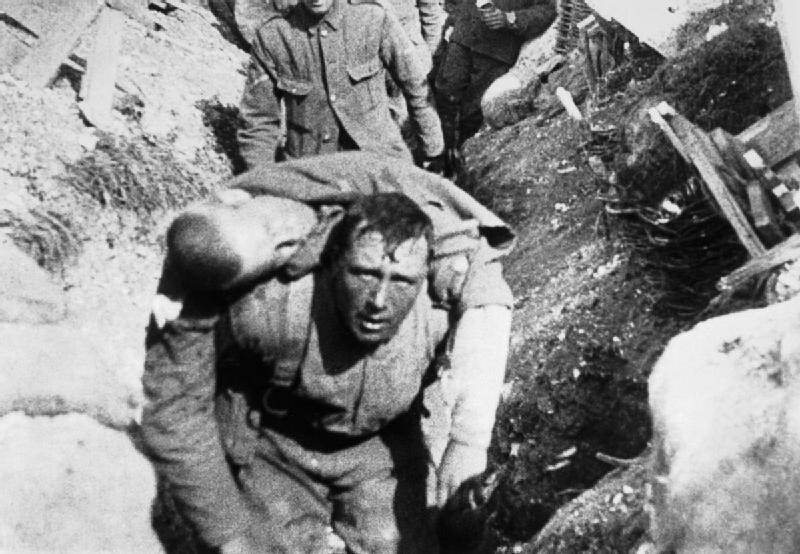
Written by guest blogger Seth Feldman.
Battle of the Somme (Geoffrey Malins and J.B. McDowell, 1916) was the most seen non-fiction film made during the Great War and in wartime Britain, the most seen film, period. For a hundred years bits of its remarkable footage have appeared in documentaries to the point where they have become iconic of the Great War itself. Battle of the Somme was the first film inducted into UNESCO’s Memory of the World Register, inspiring a digitally restored print by the Imperial War Museum and a second premiere with full orchestra a new score. In recent years, some film historians have argued that it should be designated as the first true documentary.
My problem in writing about Battle of the Somme was that to a twenty-first century audience the film doesn’t look like much. It is largely a procession of silent film intertitles, nearly one per minute, describing the shots we will see next. Almost all of these shots can be divided between preparations for the battle and its aftermath, with very few shots of the battle itself. Malins and McDowell, who worked separately, had been told to collect random shots to be used in newsreels. There was no idea for a narrative and, with wartime censorship in place, there was little mention of the bloodbath that had taken place while they were shooting.
Yet Battle of the Somme is more than just an historical curiosity. My hope was to use it as an archaeological exercise, a tool for imagining the way in which the audiences of 1916 saw it. Usually, writing about film audiences is based on reviews, newspaper reports and in some cases research by a film’s producers. And there has been some excellent writing of this kind about Battle of the Somme. But what I hoped to do was to recreate the 1916 British audience from the emotional context in which they watched the film to the way they would perceive certain shot compositions by Malins and McDowell as well as the editing credited to Malins and Charles Urban (one of the lesser sung heroes of early non-fiction filmmaking).
Battle of the Somme’s audience was an unusually homogeneous group. All of them were embarking on the third year of an unprecedented catastrophe; most coping with anxieties about friends and loved ones at the front. They were also increasingly resentful of the conditions the War had imposed upon them. As official propaganda, Battle of the Somme intended to raise their morale by connecting their sacrifices to soldiers at the front. What they saw was the enthusiasm of the troops, the care given to the wounded and, of course, what were then the battle’s small victories. Given the timing of the film’s release – while the four and a half month battle was ongoing – it also played upon the audiences’ desires for the “big push” that would finally end the conflict. Various shots in the film as well as the film’s editing and the wording of the intertitles show how this was attempted in a subtle or sometimes not-so-subtle manner.
My work was to scrutinize writing on the film and the film itself. This was made both more arduous and rewarding by the many publications released during the Great War Centennial. I then made notes to myself on and off for about a year before I even began to write. In all, the paper took far longer to produce than did the film. And while its distribution will be dwarfed by Battle of the Somme, my hope is that this archaeological exercise will provide readers with insight into other peoples’ as it existed a century ago.
Seth Feldman is an author, broadcaster, film programmer and Full Professor Emeritus at York University in Toronto. His latest Canadian Journal of Film Studies article, “Battle of the Somme: What the Audience Saw” is temporarily free to read on UTP Journals Online.
Comments on this entry are closed.